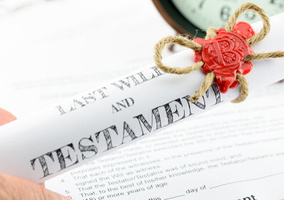In 2020, I became a trustee for Bees Abroad; an NGO empowering communities through sustainable beekeeping practices. I saw a real opportunity to help develop the brand, grow activity, and extend the reach of the charity’s excellent work. That year, we embarked on a new journey to implement legacy giving into the organisation.
Initially, there were several key opportunities that really stood out to me, including a messaging and brand refresh. I later led this with the help of a designer to improve our reach and elevate our brand recognition.
First, I was keen to help Bees Abroad diversify their income streams to sustain growth long into the future, whilst engaging with new audiences. Drawing from my experience in fundraising and having worked with larger organisations such as Cancer Research UK (CRUK), legacy giving stood out as a key area to introduce.
Lessons from larger charities
However, at the larger organisations they had big teams and an understanding of how to best drive activity across communications.
It was very new for us at Bees Abroad and we didn’t have the resources to promote things in the same way. As a smaller charity, seeing larger charities with a significant amount of their revenue coming from legacy gifts, it can sometimes feel daunting and unattainable.
I was also working as head of partnerships at the Prince’s Trust during the week, so most of my work to implement a legacies programme at Bees Abroad was during weekends and late in the evenings after work, which was initially challenging.
We looked at how to incorporate promoting legacy giving into different areas of our work. From distributing informative bookmarks during events Bees Abroad attended, weaving information into our newsletters, to driving messaging across our social channels and website.
But for our organisation, it was a new style of communication to our supporters. To help with this activity, we invested in third-party support and have now hired a campaign manager.
We’ve seen the benefit of working with industry experts and partners. They extend your team’s capabilities, offer access to resources beyond your reach, and work as an extension of your team to drive more activity with fresh ideas. Being open to partnerships and collaborations from the get-go, we’ve benefitted from the shared learnings of other charities a little further along in their legacy timeline – enabling us to work smarter, avoid similar pitfalls, and maximise opportunities available to us.
Three years since launching the programme, many supporters have pledged to leave something in their will to Bees Abroad and the charity has received its first legacy gift.
Beyond the introduction of a new income stream, our legacy journey has also introduced a number of broader advantages, including elevating the brand and gaining exposure that has increased engagement across digital channels.
We made the most of every media and PR opportunity that was presented to us – from workshops with other charities to sharing case studies – helping to expand our reach to new audiences and potential supporters. Within our first year working on legacies, Bees Abroad was featured in the Scotsman alongside the iconic Wombles.
Aim high
One lesson for small charities embarking on a legacy journey is not being afraid to aim high and follow in the direction of larger charities. Whilst you may not have the resources, find ways to alleviate this internally by working with third-party platforms or member organisations.
It is important to bring the whole organisation on board. Legacy gifts are relevant to all charity departments, so it is key for everyone to understand their value. This is something teams at CRUK always did well – sharing across the organisation what is happening in different departments – but it is helpful for organisations large and small. It is always good to understand the value of different income streams and communications channels. We make a bigger impact when working as a collective
Finally, have fun with the campaigns and communications. We found the Wombles campaign we ran was a lighthearted and creative way to begin discussions about the lasting legacy that supporters can leave for causes they care about. It helped to make what can feel like a difficult conversation feel positive and warm.
Related Articles











